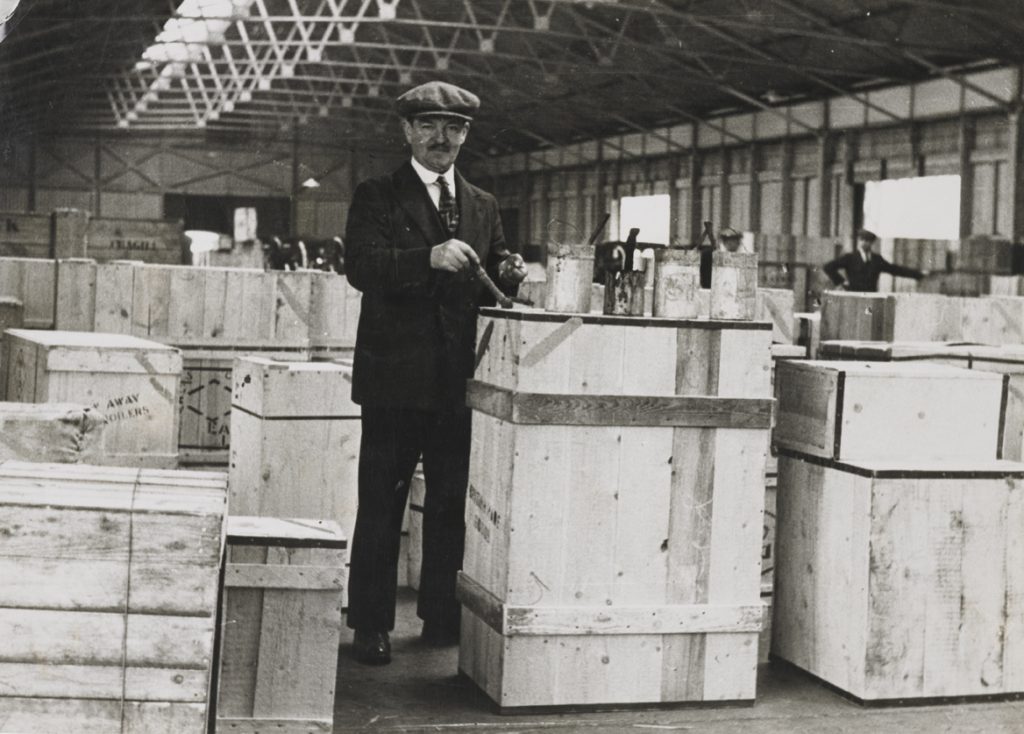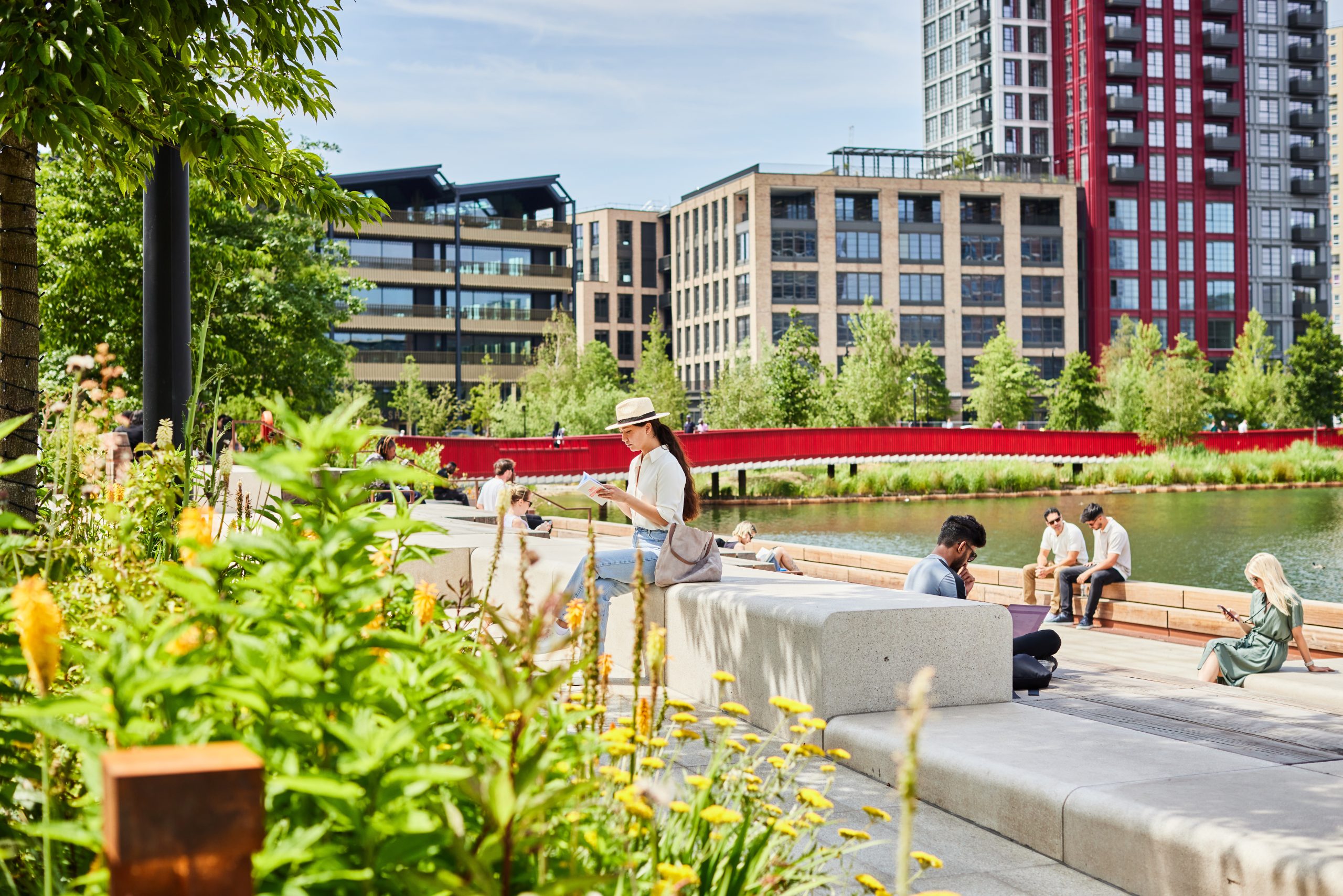

In the final instalment of our mini-series uncovering the stories behind our first three new place names, we look at the inspiration for Marker Way.
Marker Way will be a new pedestrian and cycle route connecting Deal Porters Way with Lower Road, providing access to the new Canada Water Leisure Centre. It’s named after dock workers who used to mark the timber and cargo packages as they came ashore at Surrey Docks, to show where they’d come from and where they were going. As Marker Way will feature in postal addresses, British Land needed to get this name approved by Southwark Council.
Surrey Commercial Docks, of which the present-day Canada Dock and Greenland Dock are remnants, covered 85% of the Rotherhithe peninsula and were able to accommodate hundreds of ships at a time. They received mostly bulk goods, particularly timber from Canada and the Baltic.
Incoming cargo was unloaded and moved by hand, by specialists including the lumpers who went into ships to unload them, the rafters who moved great planks of wood around in the water, and the deal porters who carried them over their shoulders.
To make sure all these packages reached their intended destinations, they had to be carefully marked according to a system that recorded where each one had come from, where it was going and who it belonged to. We can see the parallels with the labelling and distribution systems of modern commerce, albeit working with a hand tool and a ledger book rather than a barcode scanner and online updates.
The markers used a written language intelligible only to the initiated. An early reference is found in the City records, which note a payment in 1462 for “one Markyng Iron for markyng the timber” with the Bridge House Mark that distinguished the City’s property.
Writing in the Port of London Authority Magazine in 1970, the year the docks closed, Editor Alan Cameron took a look back at the timber trade. “Unique to the hardwood trade is the system of symbols used to scribe details of the content of logs into the wood,” he wrote. “These have a perfectly simple and practical origin – the scribing iron used can only make downward strokes, being drawn towards the user. So the symbols, based on Roman numerals, had to be such that they could be drawn.”
Cameron portrays this expertise as one of several types of timber “know-how” that kept the trade running, with the markers “regarded as impartial experts of utterly trustworthy and impeccable judgement in everything appertaining to timber”. While mechanisation had by 1970 transformed timber haulage, he notes, “along the river you may still find workers who could name the timber in a hardwood log at a glance, tell you what port it was shipped from and where it was cut.”
Few London timber merchants owned large yards, and in the early part of the 20th century, imported timber was stored at the docks, overseen by the Port of London Authority (PLA). “This involves the work, on a scale not attempted elsewhere, of dealing with vast quantities of wood by sorting to marks, qualities and sizes, afterwards stacking it in piles on the storage grounds or in the sheds behind the quay,” wrote the editor of the PLA’s monthly magazine in 1962. At the time, Surrey Commercial Docks held the world’s largest concentration of commercial softwood. The markers kept tabs on it all, so the deal porters could stack it right, balancing like acrobats along the beams as their timber towers rose higher and higher.
The coming of the container ships from the 1960s onwards spelled the end for the markers as it eventually did for the whole of the working docks. Large containers were now marked up at source on the other side of the world, using a standardised container number known as an ISO code. Modern systems track the shipments using cloud-based software.
The name Marker Way stands as a tribute to these workers who played such a vital role in the heyday of the docks, during a period when British trade and industry made the country the leading player on the global stage.
For more on how we’re naming new streets and spaces in the development, click here.

